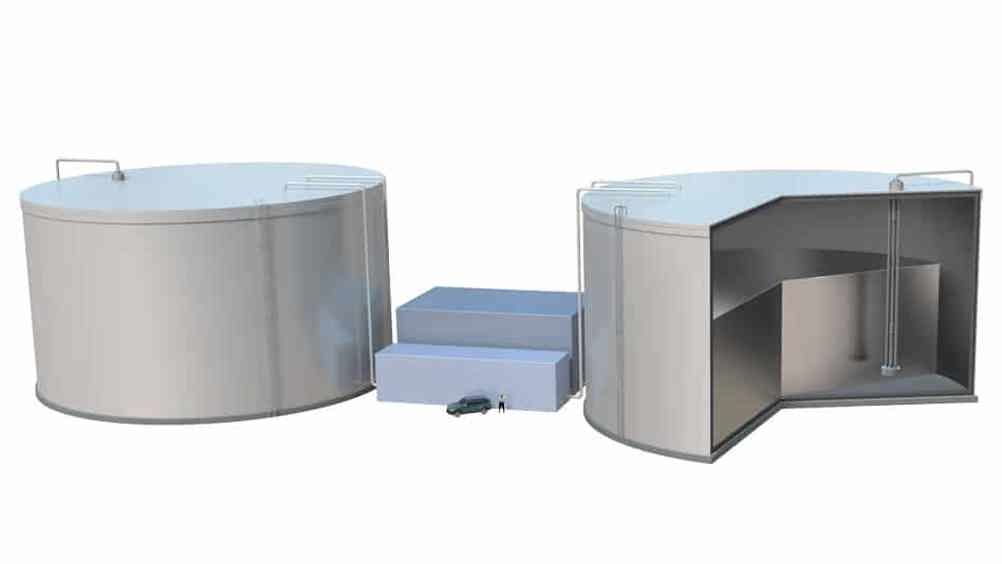MIT ‘sun in a box’ uses white hot silicon for energy storage
Engineers at MIT have developed a grid-scale energy storage concept known as the 'sun in a box', which they claim would be half the cost of pumped hydro storage.

The system relies on the transfer of molten silicon between two cylindrical graphite tanks, each about 10m wide. Silicon in the ‘cool’ tank would be stored at around 1,900°C, then pumped through a network of heated pipes into the second tank, reaching temperatures close to 2,400°C. The elements heating the pipes would be powered by excess energy from the grid, theoretically from renewable sources such as wind and solar.
To feed the stored energy back to the grid, molten silicon from the second tank – now glowing white hot - is passed through a system of pipes that emit light. This light is then captured by highly efficient multi-junction solar cells. Though commonly referred to as the ‘sun in a box’, the system’s official name is Thermal Energy Grid Storage-Multi-Junction Photovoltaics, or TEGS-MPV. The research is published in the journal Energy & Environmental Science.
“One of the affectionate names people have started calling our concept, is ‘sun in a box,’ which was coined by my colleague Shannon Yee at Georgia Tech,” said corresponding author Asegun Henry, an associate professor at MIT’s Department of Engineering. “It’s basically an extremely intense light source that’s all contained in a box that traps the heat.”
Register now to continue reading
Thanks for visiting The Engineer. You’ve now reached your monthly limit of news stories. Register for free to unlock unlimited access to all of our news coverage, as well as premium content including opinion, in-depth features and special reports.
Benefits of registering
-
In-depth insights and coverage of key emerging trends
-
Unrestricted access to special reports throughout the year
-
Daily technology news delivered straight to your inbox










Water Sector Talent Exodus Could Cripple The Sector
Maybe if things are essential for the running of a country and we want to pay a fair price we should be running these utilities on a not for profit...